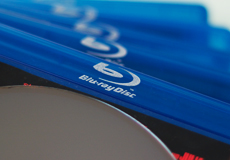By
Debra KaufmanAugust 29, 2017
At AMIA’s The Reel Thing conference in Hollywood, HBO director of archives and asset management Randal Luckow and Digital Preservation Laboratories president Steve Kochak discussed cataloging unstructured metadata for preservation in distributed databases using the open standard Archive eXchange Format (AXF). Migrating physical elements often leaves out information important for the future, and metadata generated in the course of the project isn’t always documented, leading to problems linking the metadata to digital audio-video.
Continue reading Archivists Promote AXF as Standard to End Metadata Issues
By
Debra KaufmanAugust 28, 2017
At The Reel Thing, an AMIA (Association of Moving Image Archivists) conference, Hollywood technologists and filmmakers gathered to hear presentations on challenges in restoration, remastering and archiving. PurePix Images chief executive Michael Inchalik and University of Georgia mathematics professor Alexander Petukhov looked at how Algosoft is developing software to repair vertical scratches, one of the toughest challenges in digital restoration. “We’re discussing a high-level restoration workflow,” said Inchalik. Continue reading New Software Tackles Scratch Removal for Film Restoration
By
Debra KaufmanAugust 28, 2017
At AMIA’s The Reel Thing conference in Hollywood, film director/producer Marcus Dillistone, Academy of Motion Picture Arts & Sciences managing director Andy Maltz and Academy Film Archive director Michael Pogorzelski presented a case study of an ACES reformatting and archiving project, with Dillistone’s 1999 short film “The Troop.” The topic is the King’s Troop Royal Horse Artillery, and the film had a royal premiere at BAFTA, with film industry and military guests as well as a British princess in attendance. Continue reading The Troop Redux: ACES Reformatting and Archiving Project
By
Debra KaufmanJune 29, 2016
As the latest in its ongoing Digital Town Square series, the Entertainment Technology Center at USC held a symposium on “Rethinking Digital Archiving and Storage” on June 9 at Amazon’s Santa Monica facilities. Approximately 80 people from all the major Hollywood studios, archivists and post production professionals participated in the interactive forum that examined the challenges in current archiving and storage practices, the pressures to change those practices, and emerging solutions. Continue reading ETC Hosts Digital Town Square on Digital Archiving, Storage
By
Rob ScottJuly 30, 2014
A coalition of Hollywood studios is reportedly close to a deal that will help keep Eastman Kodak in the business of manufacturing film stock, despite the entertainment industry’s move to digital production. Prior to the studios’ promise to keep purchasing film, Kodak was considering closing its manufacturing facility in Rochester, New York. Quentin Tarantino, Christopher Nolan, Judd Apatow and J.J. Abrams were among the notable filmmakers who reportedly lobbied studio heads to save film. Continue reading Filmmakers Lobby Hollywood Studios to Help Save Kodak Film
The Entertainment Technology Center @ USC will announce the launch of “Production in the Cloud” today, a new project that brings together key media and cloud-resource leaders to develop guidelines and accelerate innovation and adoption of next-gen cloud-based content creation, production, and distribution tools and processes. Senior executives from the six major studios in coordination with Rackspace, EMC, EVault, Dell and other cloud companies convened recently to serve as governing body to collectively guide this process. Continue reading ETC Announces Launch of Production in the Cloud Project

